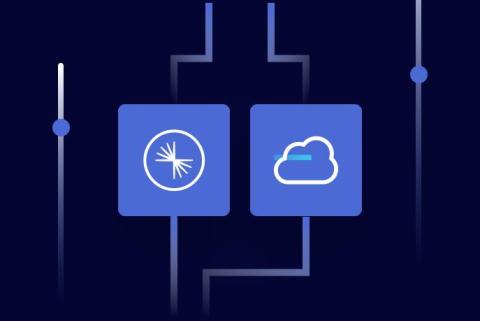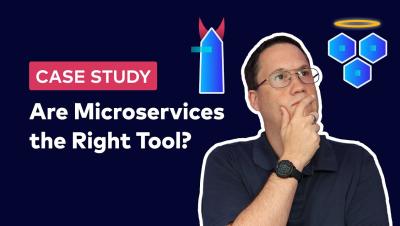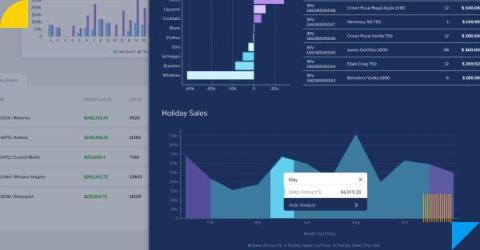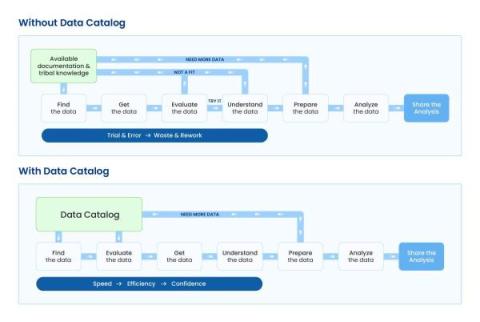Analytics
Modernize Payments Architecture for ISO 20022 Compliance
The payments industry is evolving rapidly, fueled by technological advancements, changing consumer behaviors, and a growing appetite for real-time transactions. As this transformation unfolds, new standards have been introduced to ensure the payments ecosystem's safety, security, and efficiency.
The Rise of AI in FP&A: How insightsoftware Empowers Your Team
Despite the transformative potential of AI, many financial planning and analysis (FP&A) teams are hesitating, waiting for this emerging technology to mature before investing. According to a recent Gartner report, a staggering 61% of finance organizations haven’t yet adopted AI. Finance has always been considered risk averse, so it is perhaps unsurprising to see that AI adoption in finance significantly lags other departments.
Introducing Confluent Cloud OpenSearch Sink Connector
Amazon OpenSearch is a popular fully managed analytics engine that makes it easier for customers to do interactive log analytics, real-time application monitoring, and semantic and keyword searches. It can also be used as a vector engine that helps organizations build and augment GenAI applications without managing infrastructure (we’ll talk about this in future blogs). Additionally, the service provides a reliable, scalable infrastructure designed to handle massive data volumes.
Streamlined Data Movement: Fivetran's SAP ERP Integration with Databricks Explained
Join Kelly Kohlleffel from Fivetran as he demonstrates the seamless integration of SAP ERP data into the Databricks Data Intelligence Platform using Fivetran’s powerful data movement automation capabilities. Learn how the Fivetran SAP ERP for HANA connector effortlessly syncs your data to Databricks, making it ready for all data workloads. Discover how Fivetran utilizes Databricks’ features like Serverless and Unity Catalog to help you quickly build new data products and solutions with SAP ERP data efficiently in Databricks.
Fast-Track to Data Insights: Deliver Impactful Salesforce Sales Metrics to the Databricks Gold Layer
Join Kelly Kohlleffel from Fivetran in this demonstration that moves and transforms raw Salesforce data into impactful sales metrics in the Databricks Data Intelligence Platform. Learn how to set up a Salesforce to Databricks connector with Fivetran’s fully automated and fully managed data movement platform. Then watch how the new dataset in Databricks is automatically transformed from the Databricks bronze layer to the gold layer—making it analytics-ready and data product-ready in minutes.
Unlocking enhanced LLM capabilities with RAG in BigQuery
A look at how to augment LLM results with retrieval augemented generation (RAG) and vector search, directly from BigQuery.
Event-Driven Microservices in Banking and Fraud Detection | Designing Event-Driven Microservices
How do we know whether Event-Driven Microservices are the right solution? This is the question that Tributary Bank faced when they looked at modernizing their old fraud-detection system. They were faced with many challenges, including scalability, reliability, and security. Some members of their team felt that switching to an event-driven microservice architecture would be the magic bullet that would solve all of their problems. But is there any such thing as a magic bullet? Let's take a look at the types of decisions Tributary Bank had to make as they started down this path.
Top 3 Benefits of Automated Analytics
Imagine transforming raw business data into actionable insights with minimal effort. This is the value proposition of automated analytics, a form of data analytics fast becoming more accessible among modern business intelligence (BI) and analytics software solution vendors. Independent software vendors (ISVs) and enterprise organizations at the cusp of investing in analytics struggle with manual data processes that are time-consuming and prone to errors.
ANSI X12 vs EDIFACT: Key Differences
Electronic Data Interchange (EDI) is a popular communication method that enterprises use to exchange information accurately and quickly with trading partners. EDI transmits data almost instantaneously — serving as a fast and efficient mode for exchanging business documents. ANSI X12 vs. EDIFACT are the two most common EDI standards used for EDI, but they have different structures, styles, and usage.










